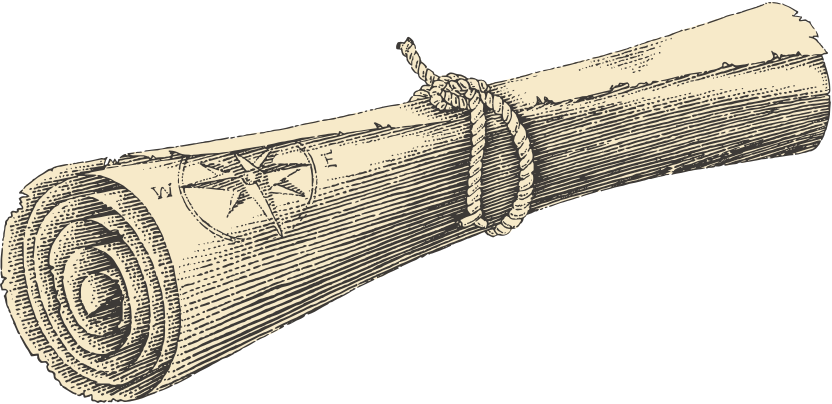You see their faces all the time. You manhandle them, you treat them like property, you shove them in your pants, and you only think about them when you want something.
In honor of Presidents’ Day, think about those men (yep, still almost entirely men) who live in your wallet and make the world go ’round. Who are these clowns, and what are they doing on your money? Here are the answers to seven brain-tickling questions about the faces gracing American money.
1. Did They Used to Put Any Old Fool on Money?
Not exactly. But things were pretty loosey-goosey before the Federal Reserve redesigned U.S. bank notes in the 1920s and set rules about who could show up on your money—mainly dead presidents, with a few exceptions.
Before then, money featured a lot of random chuckleheads. You had the likes of General Winfield Scott, interim Secretary of War for two weeks; noted beard-haver Edwin McMasters Stanton, another Secretary of War; and Stephen Decatur, a Navy commodore who helped Sweden fight Africa. Pillars of American history, one and all.
2. Did We Really Almost Lose Hamilton?
Yup! Among the exceptions to the dead-presidents-on-money rule was Alexander Hamilton, basically the founder of the American financial system and the first Secretary of the Treasury.
But in 2015, the man who wouldn’t throw away his shot almost lost his slot on the 10 spot. After a public vote saw Harriet Tubman earn a future portrait on your money, the Treasury announced that she would replace Hamilton. Public outcry was intense, mainly because Hamilton is now a super famous Broadway darling, so plans were changed.
(Check out Hamilton’s stomping grounds in Lower Manhattan on Hamilton: The Scavenger Hunt.)
3. So What’s Gonna Happen to Andrew Jackson?
The backup plan will see Tubman replace Andrew Jackson on the front of the $20 bill. (He’ll be on the back instead.) The announcement was not without controversy, because you can always find people to complain about anything, but here’s the funny thing: No one knows why he’s on there in the first place.
Jackson replaced non-Muppet Grover Cleveland during that Federal Reserve redesign in the 1920s. But the reasons for making him the face of the 20 when he’s largely remembered as a party-throwing, slave-owning brutalizer of Native Americans, are fully lost to history. Oh, and the best part? Jackson fought against paper currency and the even the existence of the Bank of the United States, so he would have hated being one of the faces of American paper money.
(Visit Jackson on horseback in Washington, D.C.’s Lafayette Park on our Race to the White Scavenger Hunt, and in Jackson Square on our New Orleans scavenger hunts.)
4. Why’s There So Much Franklin on the Benjamins?
Various versions of Benjamin Franklin’s $100 bill have featured a larger, off-center image since 1996. Why? Because we tend to notice faces more than, say, font changes on the borders of a piece of money, the U.S. Treasury decided that enlarging his face would help people spot imperfections on counterfeit bills more easily. And he’s off-center now so his face doesn’t get folded right in half all the time.
(Walk in Franklin’s footsteps on our scavenger hunt along the Freedom Trail on our Secrets of Old Boston Scavenger Hunt and on our Secrets of Old Philadelphia Scavenger Hunt.)
5. Wait, Bills Get How Big?
One of the biggest bills you’ll never see belongs to the last major exception to the dead-presidents rule: Salmon P. Chase’s $10,000 bill. As treasury secretary, Chase added his face to $1 legal tender notes to impress people (becoming one of only five people on American money while they were still alive), and somehow he made the cut during the Federal Reserve’s 1920s redesign, getting onto the $10,ooo bill.
There’s still a bill bigger than Salmon’s, though. In 1934, Woodrow Wilson graced the $100,000 bill, America’s largest denomination ever. It only lasted for three weeks and was used exclusively for official transactions between Federal Reserve Banks. Yawn. Not that a whole lot of people during the Great Depression were in a position to stroll up to the ATM and withdraw a crisp hundred grand.
(See where Wilson got his start as a university president on our Princeton Prowl Scavenger Hunt.)
6. But…What About Women?
While Harriet Tubman—and a few others—won’t be the first women to appear on U.S. currency, the list is depressingly short. Pocahontas and Martha Washington appeared on different short-lived bills in the late 1800s, and of course there have been Susan B. Anthony and Sacajawea dollar coins. End of list.
(Check out Martha’s house on the Searchin’ Mount Vernon Scavenger Hunt. Look Tubman and Pocahontas in the eyes on our American Museum Madness Scavenger Hunt in D.C., which includes a trip into the National Portrait Gallery.)
7. Dare I Ask About Other People of Color?
Notably, Dr. Martin Luther King Jr. will join Tubman and company in the currency redesigns to be unveiled in 2020 (and put into circulation…eventually). Only once has a man of color graced the front of an American bill: Running Antelope, a Sioux chief, appeared on the 1899 $5 silver certificate…depicted wearing a headdress from another tribe, because his Sioux headdress was too tall for the engraving. Sigh.
Where Can I Find More Fun?
Visit the Public Scavenger Hunt schedule to find a hunt in seven cities around the country. To ask us about arranging a corporate scavenger hunt anywhere, contact us online or at 877-946-4868, extension 111.
Check out the rest of the blog for fun stuff—like eight truly bizarre pieces of nude art from around the world and three new or revamped corporate scavenger hunts in Seattle—and useful tips for planning private and corporate events.
